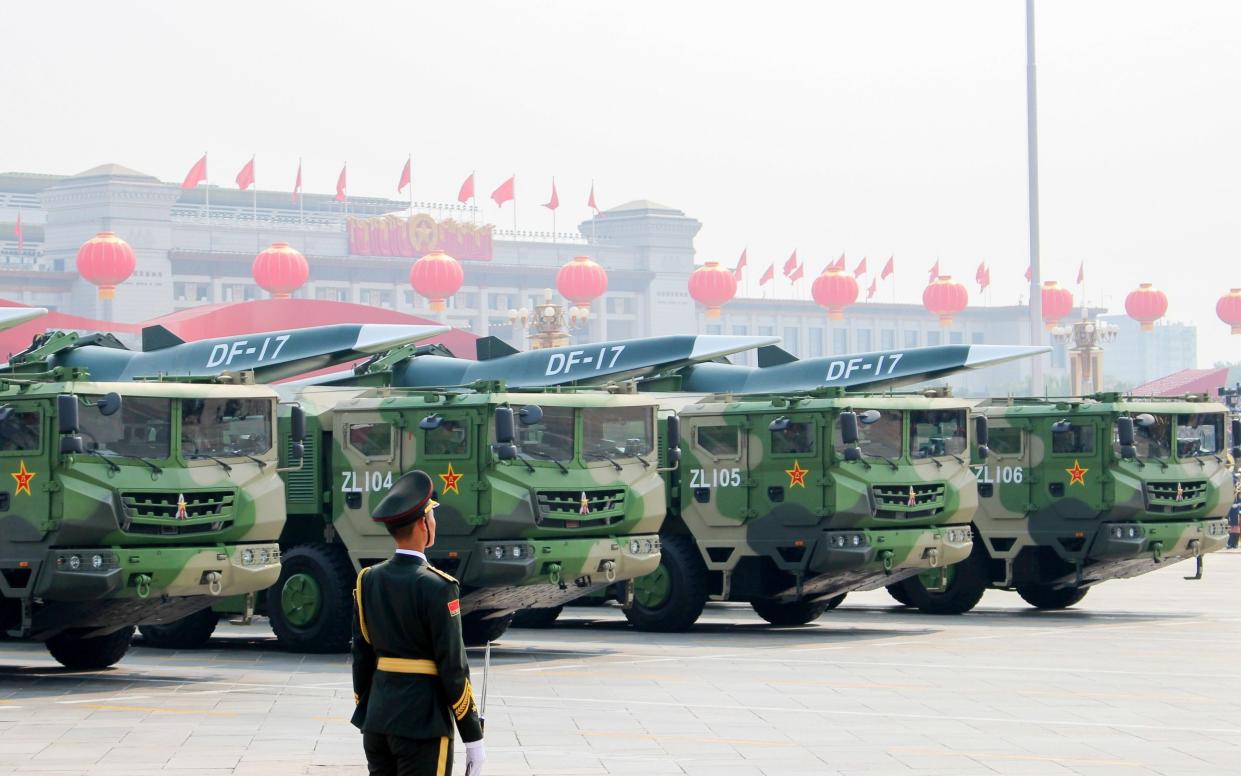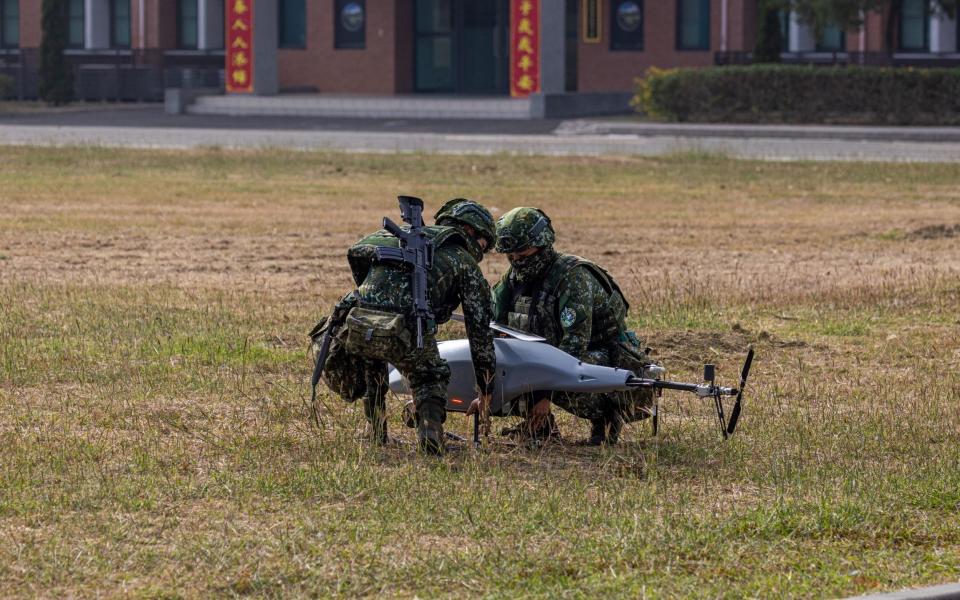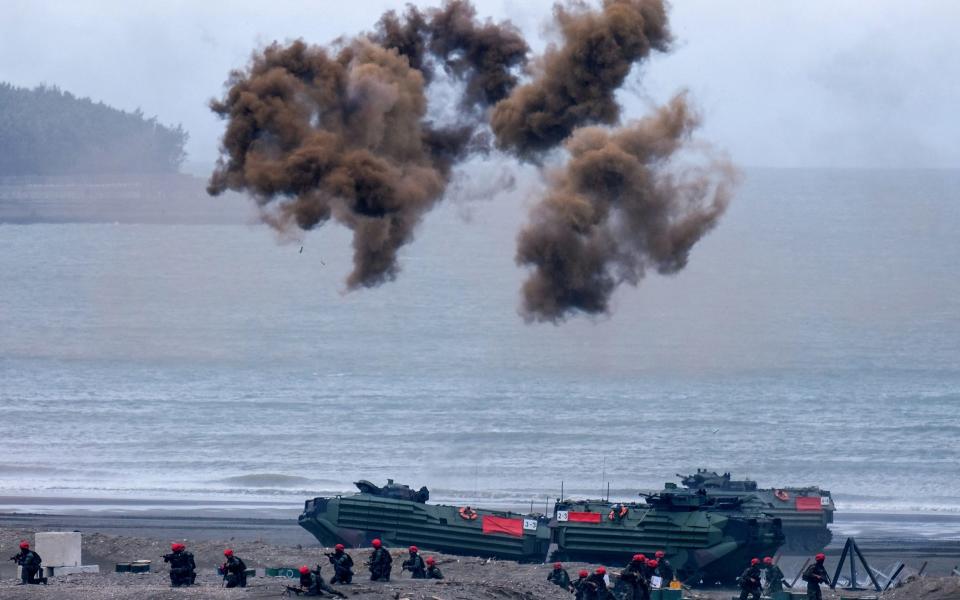China to rethink Taiwan seizure after Iran’s failed attack on Israel

China will be re-calibrating its plan to seize Taiwan to take into account lessons learned from Iran’s failed attack on Israel, defence experts say.
Beijing, which has a history of military co-operation with Tehran, will be looking at ways to break through the advanced technology and effective alliance that led to almost all of the Iranian drones and missiles being intercepted.
Rupert Hammond-Chambers, the president of the US-Taiwan business council, said: “They will be picking apart what transpired, not just in the way in which the Iranians attacked but also how we responded – the Israelis and the coalition that supported them.
“The kill rate for the drones and the missiles was extremely high, almost perfect. The walk-away for the PLA [People’s Liberation Army] will be that the Americans and their allies have the technology to significantly blunt an attack.”
A barrage of drone and missile strikes would be a critical part of any conventional attack on Taiwan, an island of 23.5 million people.

China has invested hundreds of billions of dollars in upgrading its military capabilities, including a rapidly expanding arsenal of thousands of short to intercontinental-range ballistic missiles and an estimated 500 operational nuclear warheads.
A recent purge by Xi Jinping, China’s president, of the top ranks of the strategic rocket force overseeing this growing stockpile has raised questions about whether widespread corruption could undermine efforts to modernise the armed forces and China’s war readiness.
Taiwan, on the front lines of China’s formidable military build-up, remains outmatched and facing a huge threat from medium-range ballistic missile systems along the south-eastern Chinese coast. The arsenal is reported to include the DF-17 hypersonic ballistic missile that, say experts, could reach Taiwan in just six to eight minutes.
Taiwan’s defence capabilities were progressing in the right direction with investment in US-made PAC-3 missile defence systems and its own missile programmes, and it would soon have the largest F-16 combat aircraft fleet in the region, said Mr Hammond-Chambers.
But the “X-factor” in a Taiwan Strait conflict would be whether Taipei could rely on its partners for help in the same way Israel did.
“The Jordanians, the Brits, the States and the Israelis all worked together to negate the Iranian attack. To what extent do we have that in place in North Asia?” said Mr Hammond-Chambers.
“It’s coming but I’ve not seen that yet – that common operating platform that allows for seamless interoperability.”
Japan, a supportive neighbour, is building up its own F-35 fighter jet fleet and the United States, Taipei’s largest arms supplier, has significant forces deployed near Taiwan.

Washington’s Taiwan doctrine of “strategic ambiguity” should be switched to “strategic clarity” as a better deterrent, argued Mr Hammond-Chambers.
According to the Times of Israel, the US-based Arms Control Association reports Iranian missiles are largely based on North Korean and Russian designs and enhanced with Chinese technology.
Fu S Mei, the director of the New York-based Taiwan Security Analysis Centre, said Beijing had likely learned from Iran’s failed assault about the feasibility of intercepting slower-moving drones and cruise missiles launched over significant distances that allowed sufficient reaction time.
But he said the Chinese leadership may not be too concerned if they believed their own missiles and drones were of better quality, with greater precision and ability to penetrate air defences.
“These missiles are also likely to fly less than half the distances, thus affording significantly less reaction time and battlespace for engagement by the defences,” he said.
Shorter range requirements would lower costs, allowing the deployment of a larger number of missiles.
Taiwan, too, could learn from Israel’s successful defence model, which combined robust integrated air and missile defence system (IAMDS), appropriate sensors, and integrated command and control with assistance from allies.
Taiwan “already possesses many of these key components” but needed to improve battle management systems and find ways to secure assistance from the US and other regional partners, he said.

 Yahoo News
Yahoo News 
